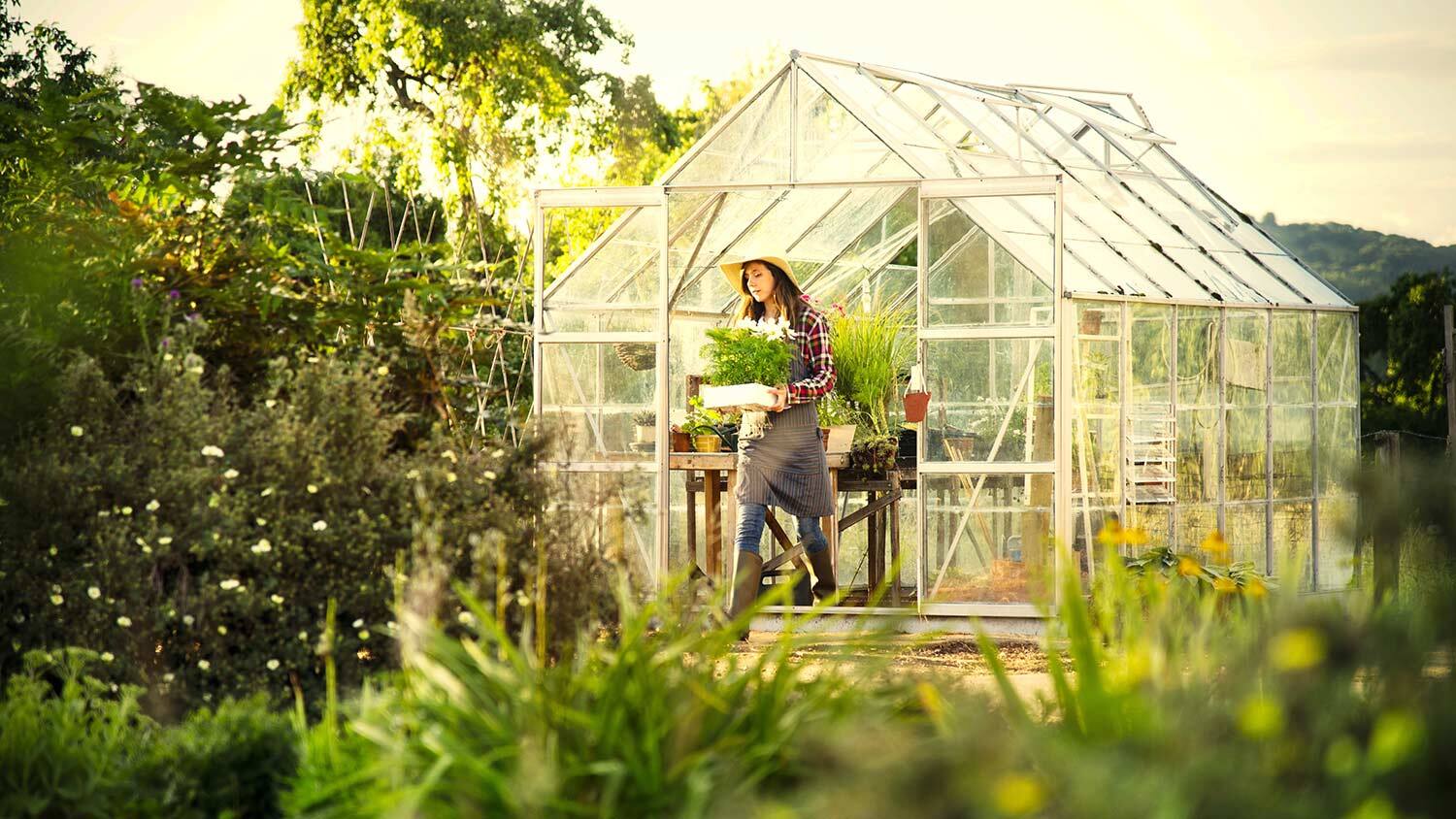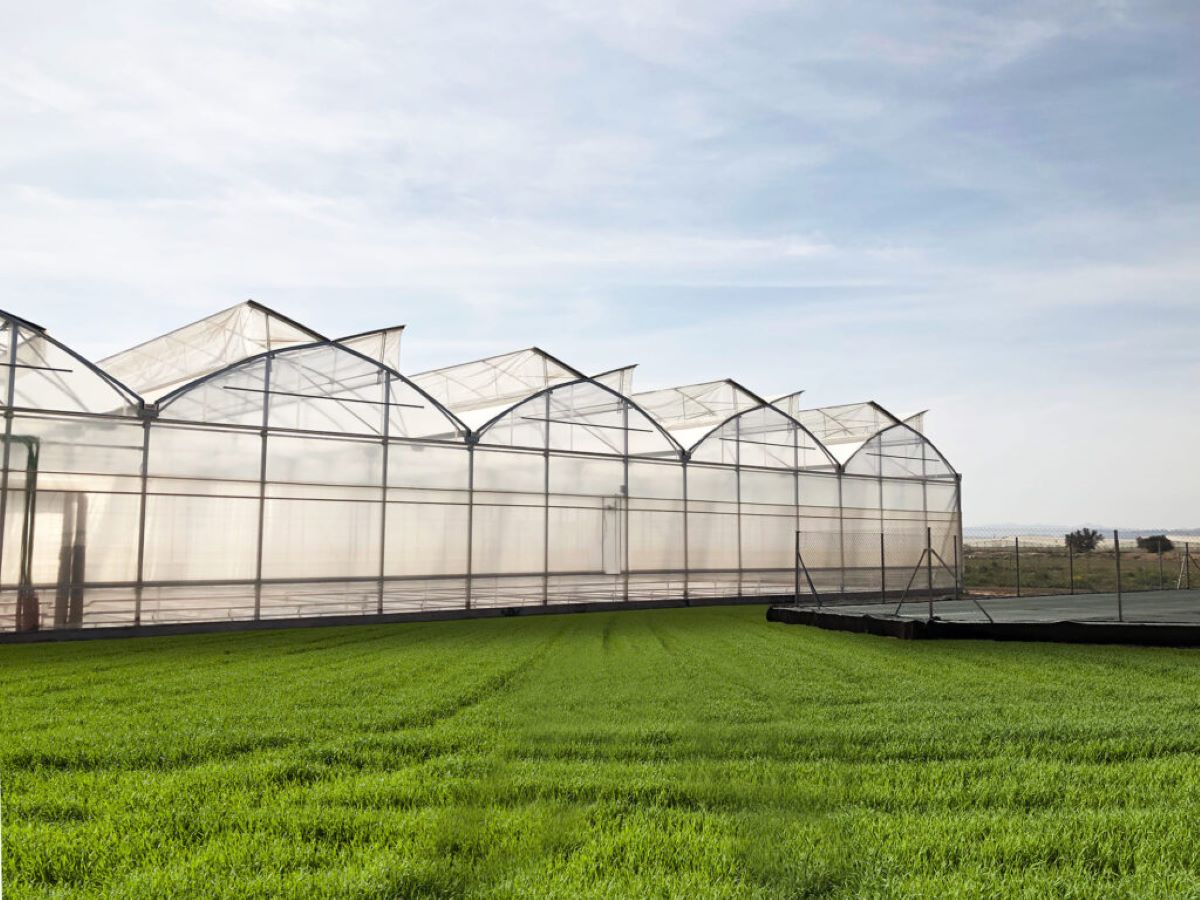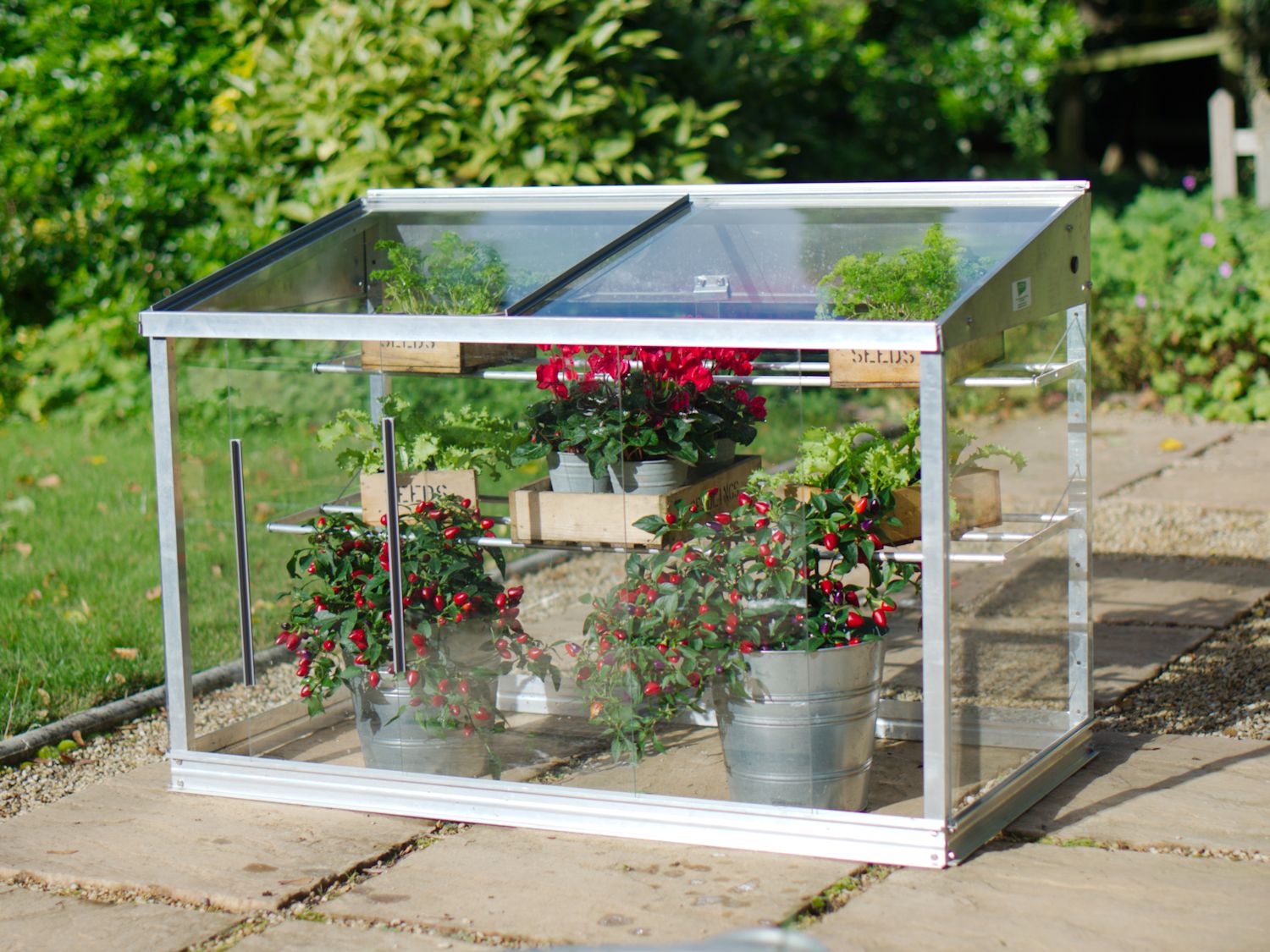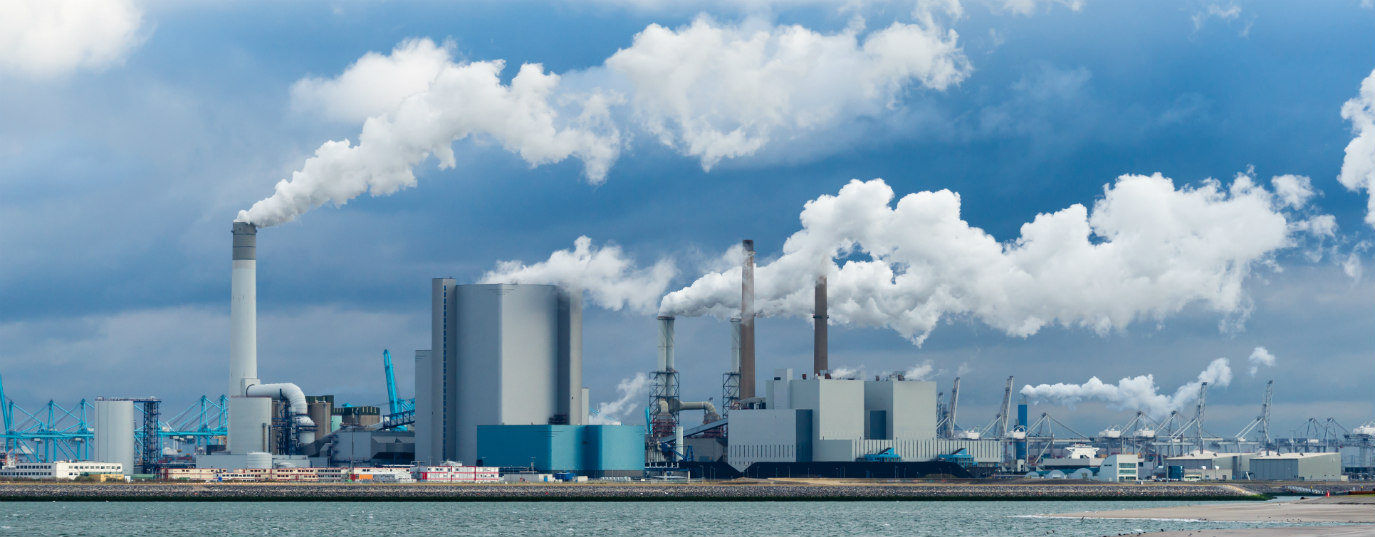Home>Gardening Basics>What Is Greenhouse Made Of


Gardening Basics
What Is Greenhouse Made Of
Modified: January 22, 2024
Discover what greenhouse structures are made of and get started on building your own with this comprehensive guide.
(Many of the links in this article redirect to a specific reviewed product. Your purchase of these products through affiliate links helps to generate commission for Chicagolandgardening.com, at no extra cost. Learn more)
Table of Contents
Introduction
Greenhouses are structures designed to create a controlled environment for plant growth. By harnessing sunlight and regulating temperature, humidity, and ventilation, greenhouses enable gardeners and farmers to extend the growing season and cultivate plants that may not otherwise thrive in their natural environments.
One crucial component of a greenhouse is the material that it is made of. The choice of material plays a significant role in determining the greenhouse’s performance, durability, and energy efficiency. Different materials offer varying levels of light transmission, insulation, strength, and cost-effectiveness. This article will explore the most common materials used in greenhouse construction and their respective advantages and disadvantages.
There are several options available for greenhouse construction, including glass, plastic, polycarbonate, acrylic, fiberglass, and wood. Each material has unique characteristics and is suited for different growing conditions and preferences. Factors such as budget, location, desired functionality, and aesthetic appeal will influence the choice of greenhouse material.
If you’re considering building or purchasing a greenhouse, it’s important to understand the pros and cons of each material to make an informed decision. Let’s delve into the various types of greenhouse materials and discover which one might be the best fit for your needs.
Glass Greenhouses
Glass has been a popular choice for greenhouse construction for centuries. Its transparent nature allows for optimal light transmission, creating a bright and well-lit environment for plant growth. Glass greenhouses offer excellent visibility, allowing gardeners to admire their plants from both inside and outside the structure.
One advantage of glass greenhouses is their ability to retain heat. Glass has a high thermal mass, which means it can absorb and store heat from the sun during the day and release it slowly at night, creating a more stable and consistent temperature within the greenhouse. This thermal efficiency is especially beneficial in colder climates or during the winter months.
Another benefit of glass greenhouses is their longevity. Glass is a durable material that can withstand harsh weather conditions, such as heavy rain, wind, and hail. It is also resistant to fading and discoloration over time, ensuring that the greenhouse maintains its aesthetic appeal for many years.
However, there are some downsides to choosing a glass greenhouse. The initial cost of construction can be higher compared to other materials. Glass is also relatively heavy, requiring sturdier and more expensive framing structures. Additionally, glass is a poor insulator, which means it may require additional insulation measures such as double-pane glass or the installation of shades or blinds to regulate temperature and prevent excessive heat loss.
It is important to note that glass greenhouses can be more prone to breakage compared to other materials. Accidental impacts, such as falling tree branches or hail storms, can shatter the glass. However, advancements in tempered or safety glass have improved the safety aspect, reducing the risk of injury.
In summary, glass greenhouses offer excellent light transmission, heat retention, and durability. They create a visually appealing environment and provide a long-lasting structure. However, they can be more expensive to construct and may require additional insulation measures. If you live in a colder climate or prioritize aesthetics and visibility, a glass greenhouse may be the perfect choice for you.
Plastic Greenhouses
Plastic greenhouses have gained popularity in recent years due to their affordability, versatility, and ease of construction. These greenhouses are typically made from materials such as polyethylene (PE), polyvinyl chloride (PVC), or polypropylene (PP) plastic. Plastic greenhouses are lightweight and offer a cost-effective solution for those on a budget.
One of the key advantages of plastic greenhouses is their excellent insulation properties. Plastic materials have lower thermal conductivity compared to glass, which means they can retain heat more efficiently. This insulation helps to maintain a stable temperature within the greenhouse, ensuring optimal growing conditions for plants.
Plastic greenhouses also provide diffused light transmission, which is beneficial for plants as it reduces the risk of scorching and creates more even light distribution. Additionally, plastics can block harmful UV rays, preventing damage to sensitive plants and reducing the risk of plant diseases caused by excessive UV exposure.
Another advantage of plastic greenhouses is their flexibility and durability. Plastic materials can be easily molded into different shapes and sizes, allowing for greater design versatility. They are also resistant to breaking or shattering, making them more suitable for areas prone to high winds or extreme weather conditions. Plastic greenhouses are also lightweight, making them easier to transport and assemble.
However, it’s important to note that plastic materials can deteriorate over time due to exposure to sunlight. They may become brittle, discolored, or develop micro-cracks, which can impact the greenhouse’s performance and longevity. Regular maintenance, such as applying a UV-protective coating or replacing worn-out plastic coverings, is necessary to ensure the integrity of the greenhouse.
Plastic greenhouses may also have limited lifespan compared to other materials, such as glass or polycarbonate. The plastic coverings may need to be replaced more frequently, adding to the maintenance and cost considerations. However, their initial affordability often offsets these long-term expenses.
In summary, plastic greenhouses provide an affordable and versatile option for plant enthusiasts. They offer excellent insulation, diffused light transmission, and durability. While they may require more frequent maintenance and have a shorter lifespan compared to other materials, plastic greenhouses are a popular choice for hobby gardeners, those on a budget, or those looking for easy assembly and versatility in greenhouse design.
Polycarbonate Greenhouses
Polycarbonate greenhouses have become increasingly popular in recent years due to their unique combination of strength, durability, and insulation properties. Polycarbonate is a lightweight and translucent plastic material that offers several advantages for greenhouse construction.
One of the key benefits of polycarbonate is its excellent thermal insulation. It has a high R-value, which measures the material’s resistance to heat flow. This means that polycarbonate can effectively trap and retain heat, providing a more stable and conducive environment for plant growth. The insulation properties of polycarbonate also contribute to energy efficiency, reducing heating costs in colder climates.
Polycarbonate also offers high light transmission. Its transparent nature allows ample sunlight to enter the greenhouse, promoting healthy plant growth. Moreover, polycarbonate panels are often designed to diffuse the sunlight, reducing the risk of plant scorching and creating more even light distribution throughout the greenhouse.
Another advantage of polycarbonate greenhouses is their durability. Polycarbonate is impact resistant and can withstand extreme weather conditions, such as hailstorms or high winds, without breaking or shattering. This makes them an ideal choice for regions with harsh weather patterns.
Furthermore, polycarbonate panels are typically UV-stabilized, protecting plants from harmful UV radiation while also preventing degradation and discoloration of the material itself. The UV resistance ensures the longevity of the greenhouse and helps to maintain optimal growing conditions.
Polycarbonate greenhouses do have some considerations to keep in mind. While the insulation properties are beneficial in most climates, they can pose challenges in warmer regions where excessive heat buildup may occur. Additional ventilation or shading might be necessary to prevent overheating.
Additionally, polycarbonate panels may require periodic cleaning to maintain optimal light transmission. Dust, dirt, or algae growth can obstruct sunlight, impacting plant health. Regular cleaning with soapy water and a soft brush is typically sufficient to keep the panels clear.
Overall, polycarbonate greenhouses offer a compelling combination of insulation, durability, and light transmission. They are suitable for a wide range of climates and provide an efficient and long-lasting solution for greenhouse gardening. Whether you are a professional grower or a hobbyist, a polycarbonate greenhouse can provide an excellent environment for your plants’ growth and thrive.
Acrylic Greenhouses
Acrylic greenhouses are gaining popularity as a viable alternative to glass or polycarbonate structures. Acrylic is a clear, lightweight, and durable material that offers several benefits for greenhouse construction.
One key advantage of acrylic is its exceptional light transmission. Acrylic panels allow high levels of sunlight to pass through, ensuring that plants receive the necessary amount of natural light for healthy growth. Moreover, acrylic has excellent optical clarity, providing a clear and unobstructed view of the plants inside the greenhouse.
In addition to excellent light transmission, acrylic is known for its insulating properties. Acrylic panels have good heat retention capabilities, creating a stable and warm environment suitable for plants to thrive. This is particularly useful in cooler climates or during winter months when maintaining higher temperatures is necessary.
Acrylic also offers superior durability compared to glass or other plastic materials. It is highly impact-resistant and less likely to shatter or break under pressure. This makes it a suitable choice for areas prone to extreme weather conditions or where accidental impacts may occur.
Furthermore, acrylic is resistant to UV radiation, protecting both the plants and the material itself from the harmful effects of the sun’s rays. This resistance ensures that the acrylic panels retain their transparency and do not yellow or degrade over time. It also helps prevent damage to plants caused by excessive UV exposure.
Despite its many advantages, there are a few considerations when it comes to acrylic greenhouses. Acrylic has a lower scratch resistance compared to glass, so care must be taken to avoid surface damage during cleaning or maintenance. Additionally, acrylic may expand and contract with temperature fluctuations, so proper installation techniques should be followed to allow for thermal expansion.
It’s worth noting that acrylic can be more expensive than other greenhouse materials, such as plastic or polycarbonate. However, its durability, light transmission, and heat retention properties may justify the higher upfront cost for some gardeners.
In summary, acrylic greenhouses offer excellent light transmission, insulation, and durability. They are a suitable choice for gardeners who want to provide an optimal growing environment for their plants while also enjoying unobstructed views of their greenery. Despite the higher cost, the benefits of acrylic make it a compelling choice for those looking for a long-lasting and visually appealing greenhouse solution.
Fiberglass Greenhouses
Fiberglass greenhouses have gained popularity in recent years due to their unique combination of strength, insulation, and affordability. Fiberglass is a composite material made from a combination of glass fibers and resin. This material offers several advantages for greenhouse construction.
One of the key benefits of fiberglass is its excellent durability and resistance to weathering. Fiberglass panels are highly resistant to corrosion, UV radiation, and impact. This makes them an ideal choice for areas with harsh weather conditions or high levels of humidity. Fiberglass greenhouses have a longer lifespan compared to other materials, such as plastic or even glass.
Fiberglass also offers excellent insulation properties. It has a low thermal conductivity, which means it can effectively prevent heat loss or gain in the greenhouse. This insulation helps maintain a stable temperature inside the structure, creating an optimal environment for plants to thrive.
Additinally, fiberglass panels are known for their exceptional light diffusion capability. This attribute allows for even light distribution and minimizes the risk of plant scorching. The diffused light helps prevent hot spots and provides a more uniform distribution of light throughout the greenhouse, promoting healthy and consistent plant growth.
Moreover, fiberglass is lightweight, making it easier to transport and assemble the greenhouse structure. This can be particularly advantageous for those who want to set up a greenhouse in a remote or difficult-to-access location.
However, there are a few considerations when using fiberglass for greenhouse construction. Over time, fiberglass may experience some yellowing or loss of transparency due to exposure to UV radiation. This can impact light transmission and may require periodic cleaning or application of a UV-protective coating to maintain optimal performance.
Another consideration is that fiberglass panels can be more brittle compared to other materials such as polycarbonate. Care must be taken during installation and maintenance to avoid excessive stress or impact that may result in cracking or breakage.
Overall, fiberglass greenhouses offer durability, insulation, and light diffusion properties. They are suitable for various climates and provide a reliable and cost-effective solution for greenhouse enthusiasts. If you are looking for a long-lasting and efficient greenhouse option, fiberglass might be the perfect choice for you.
Wood Greenhouses
Wood greenhouses have a timeless appeal and offer a natural and rustic aesthetic to any garden. Wood has been a traditional choice for greenhouse construction for centuries, and it continues to be a popular option for many gardeners.
One of the key advantages of wood greenhouses is their excellent insulation properties. Wood is a natural insulator, providing better heat retention compared to materials like glass or metal. This insulation helps create a more stable and consistent temperature inside the greenhouse, which is beneficial for the plants’ growth.
Wooden structures also have the advantage of being highly customizable. Wood can be easily cut, shaped, and assembled to create unique and personalized greenhouse designs. This flexibility allows gardeners to customize their greenhouse according to specific needs and preferences.
Additionally, wood is an environmentally friendly and sustainable choice for greenhouse construction. It is a renewable resource, and when sourced responsibly, it has a lower environmental impact compared to other materials. Wood is also biodegradable and can be easily recycled or repurposed at the end of its life.
Wood greenhouses blend seamlessly with natural surroundings and can enhance the overall aesthetics of a garden. They can be painted or stained to match existing outdoor structures or complement the landscape. Wood also offers an inviting and warm atmosphere for both gardeners and plants.
However, there are a few considerations when it comes to wood greenhouses. Wood requires regular maintenance to ensure its longevity and durability. It needs to be treated or stained to protect against rot, insect damage, and weathering. Routine inspections and repairs are necessary to address any signs of decay or structural issues.
Another consideration is that wood may have a shorter lifespan compared to other materials like glass or metal. However, with proper maintenance and care, a wood greenhouse can endure for many years.
Lastly, wood greenhouses tend to have higher initial costs due to the materials and construction involved. However, for gardeners who appreciate the charm and natural beauty of wood, the investment can be well worth it.
In summary, wood greenhouses provide excellent insulation, versatility, and aesthetic appeal. They offer a natural and inviting environment for plant growth. Although wood requires regular maintenance and has higher upfront costs, it remains a popular choice for gardeners who value its warmth, sustainability, and customizable features.
Conclusion
When it comes to greenhouse construction, choosing the right material is essential for creating an optimal growing environment. Each material has its own unique set of advantages and considerations that can influence the overall functionality, durability, and aesthetics of the greenhouse.
Glass greenhouses offer excellent light transmission and heat retention but can be more expensive to construct and require additional insulation measures. Plastic greenhouses are affordable, versatile, and provide good insulation, but may require more frequent maintenance and have a shorter lifespan.
Polycarbonate greenhouses offer a balance of insulation, durability, and light transmission, making them suitable for a wide range of climates. Acrylic greenhouses provide exceptional light transmission and insulation, but they can be more expensive and require careful maintenance to avoid scratching.
Fiberglass greenhouses offer durability, insulation, and light diffusion properties but may experience yellowing and require periodic cleaning. Wood greenhouses provide excellent insulation, customization options, and natural aesthetics, but they require regular maintenance and have higher upfront costs.
Ultimately, the choice of greenhouse material depends on various factors, including budget, climate, functionality requirements, and personal preferences. It’s important to consider these factors and weigh the benefits and considerations of each material before making a decision.
Regardless of the material chosen, constructing and maintaining a greenhouse requires dedication, effort, and careful consideration of the specific needs of the plants. By selecting the appropriate material and implementing proper maintenance practices, gardeners can create a thriving greenhouse that supports the growth and cultivation of their plants throughout the year.
Whether you opt for the traditional charm of a glass or wood greenhouse, the affordability of plastic or fiberglass, or the insulation properties of polycarbonate or acrylic, each option offers its own unique advantages and can provide an enriching experience for gardeners of all levels of expertise.
So, go ahead and choose the material that best suits your needs and start cultivating your dream greenhouse today!








